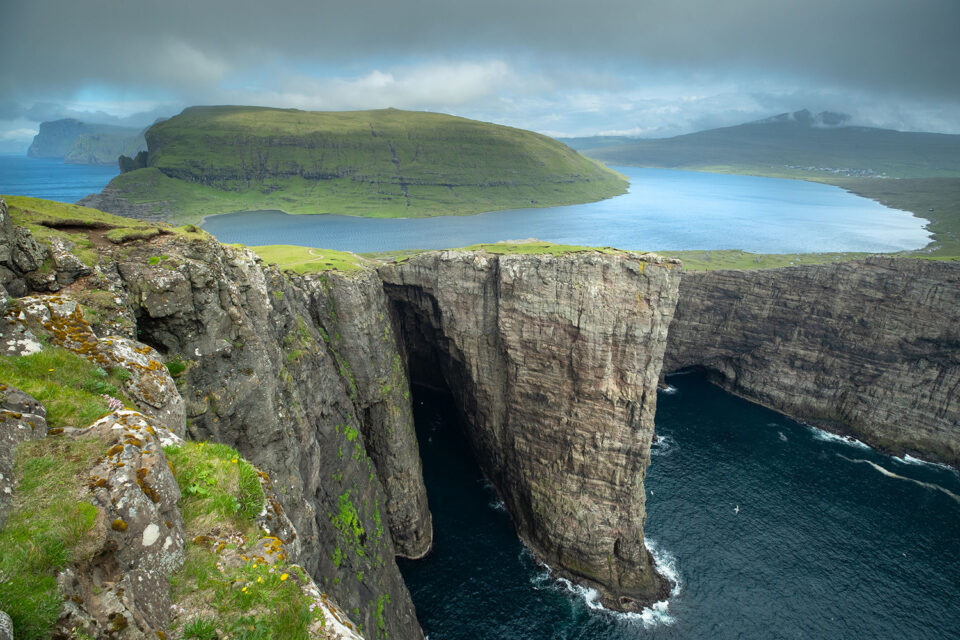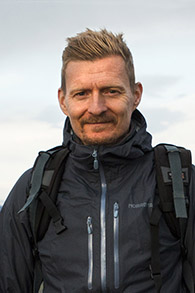My first glimpse of Faroese terrain came through a fleeting hole in the fog as my plane descended toward the runway on a rainy June morning. Although streaking beads of water obscured my view through the window, I spotted a lacy cascade meandering down a verdant slope. I was already smitten.
The Faroe Islands is one of those places that when you mention it to someone, the usual response is “Where??” On this planet of now 8 billion people, that’s a good sign if you ask me. This small and isolated archipelago resides in the Northern Atlantic halfway between Iceland and Scotland. This geographic midpoint is reflected clearly in the Faroe Islands’ geographic vibe, which exhibits bold geologic features draped with emerald-green felt. This collection of 18 mountainous islands is interlaced by numerous inlets and fjords and sprinkled with colorful villages with sod roofs and narrow streets. It’s utterly dramatic and charming at the same time.
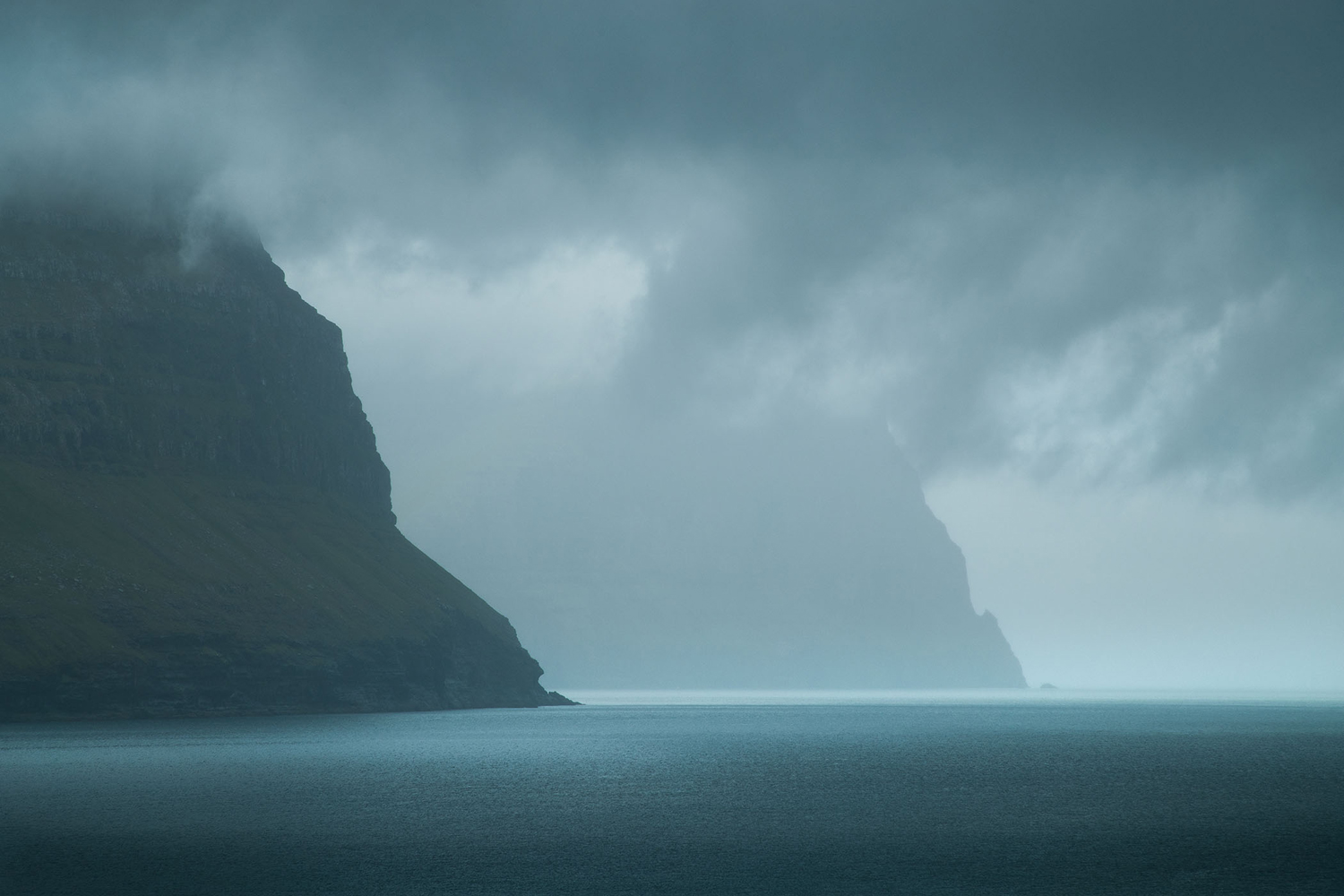
Most diagrams of the Gulf Stream show its primary northern route piercing the Faroe Islands like an arrow. As a result, this weather-active location in the middle of the ocean bestows some of the most dramatic conditions I’ve ever experienced, and thus some of the most photogenic as well. Additionally, the adage that “There’s no such thing as bad weather, only bad clothing” applies in spades here. If you’re cozy and dry, this place is a photographer’s playground.
In summer, the climate is dominated by water in both gaseous and liquid form. Fog, mist, and ample rain makes everything exceptionally green and atmospheric, while cascades and waterfalls pour from nearly every hillside. Although the islands are naturally treeless and composed of many layers of volcanic basalt, they are covered with a thin layer of spongy soil and lush grass. The soil is less than a meter thick in most places, sagging and cracking under its own weight as it strains to hold on to slopes of solid bedrock. In autumn and winter, the palette changes from 50 shades of green to autumnal rusty browns and yellows with a possible layer of sticky snow sprinkled on the higher elevations like powdered sugar.
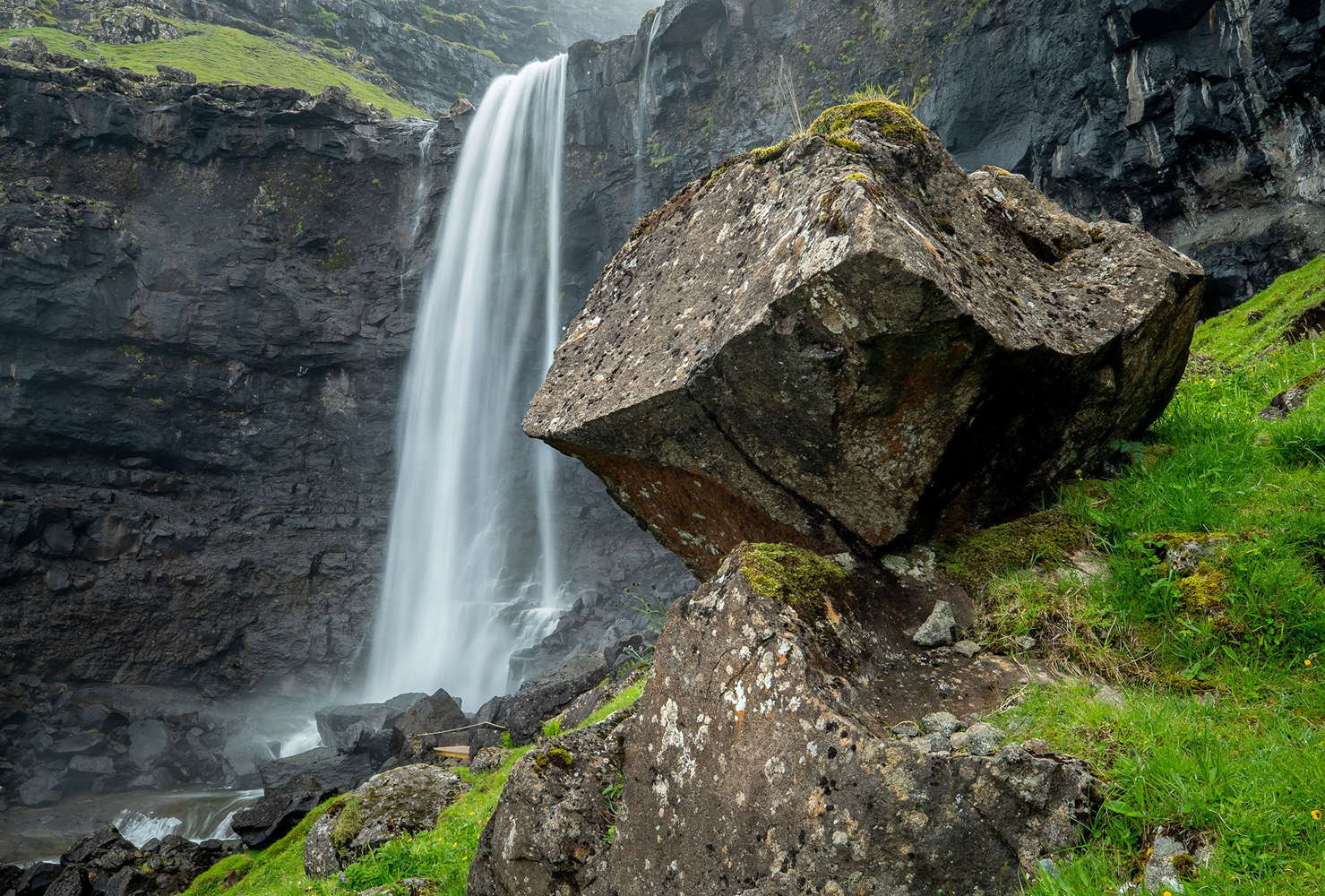
Each day of our week-long tour began like Groundhog Day with the same exact view out my hotel room window; in the foreground, thick grass and delicate flowers inundated with dew drops. In the background, fog so thick you could barely see the end of the building 100 meters away. Luckily, these were not the conditions we had to photograph in! Since Hotel Føroyar is located 500 vertical feet up the slope from the capital town of Thórshavn, its altitude often puts it squarely in the fog bank that frequents this part of the island most summer mornings and evenings. So much for a room with a view!
Although overall weather conditions on the islands are seasonal, the Faroe Islands are characterized by microclimates that are in constant flux at any time of year. In summer, rain and fog can envelope one area while spotlights of glorious sun beams down just a mile away. Everything depends on the direction of wind, prevailing weather, and elevation. As a result, the photography is potentially awesome at any moment provided you have exceptional local knowledge, keen intuition, and experience with these tricky conditions.
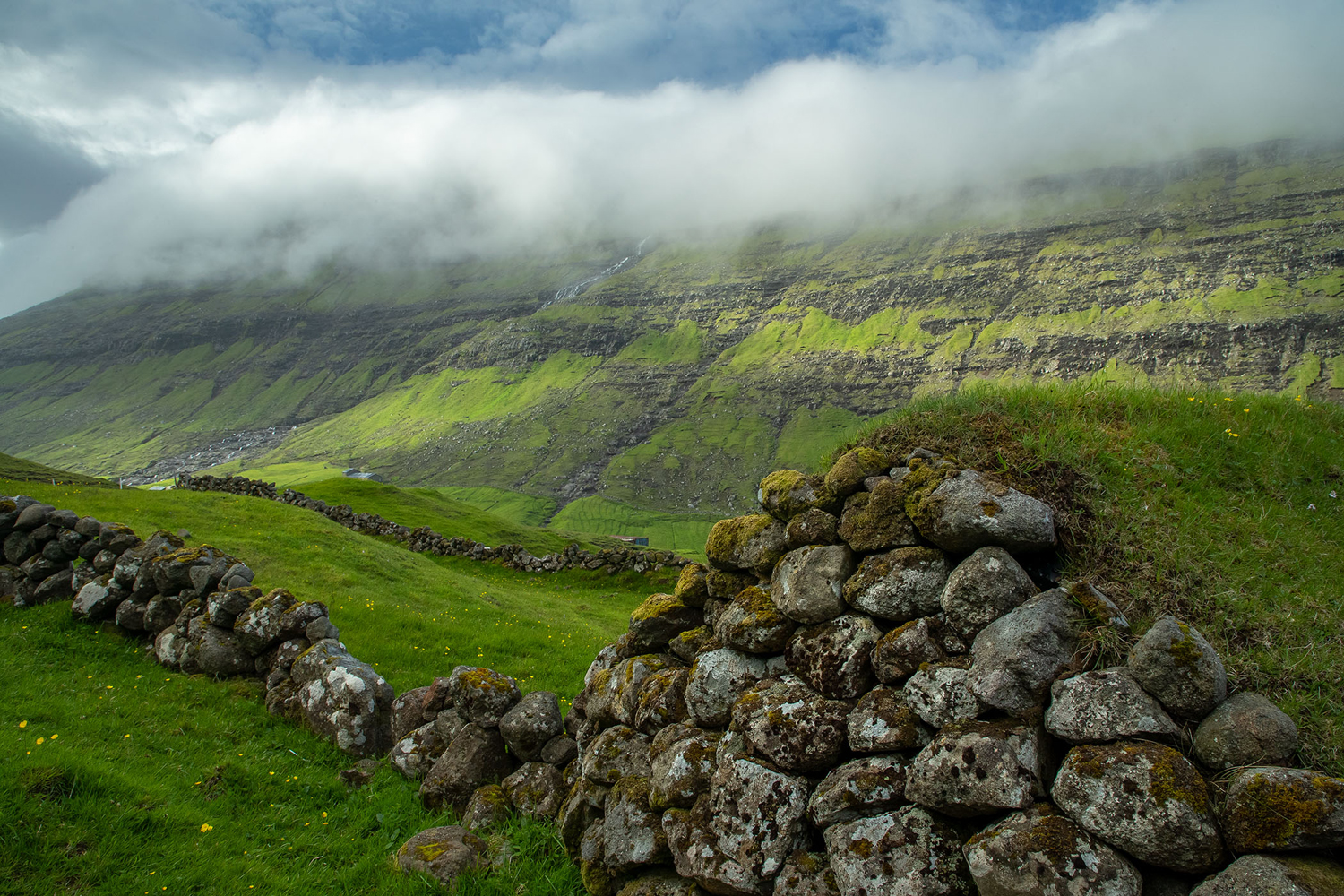
Enter Thomas Vikre, a local guide and talented photographer with over 7 years of experience in the Faroe Islands. With Thomas as my resourceful advisor and assistant who knows everyplace and everyone, we were able to navigate around the worst of the weather and into the best. We may have driven through a lot of epic rain and fog as thick as cotton balls, but we were hardly ever thrown off or delayed by it. To be honest, I can’t recall ever getting that wet despite all the water everywhere.
The visual impressions of the Faroe Islands can best be described as raw, elemental, and captivating. Looking back, it feels like something out of a Viking storybook with sculpted monoliths, windswept mountains and monumental cliffs plunging into a metallic sea. Looking across some of the fjords toward imposing cliffs, it’s no wonder it was chosen as the filming location for the villain’s lair in the last James Bond film, No Time to Die.
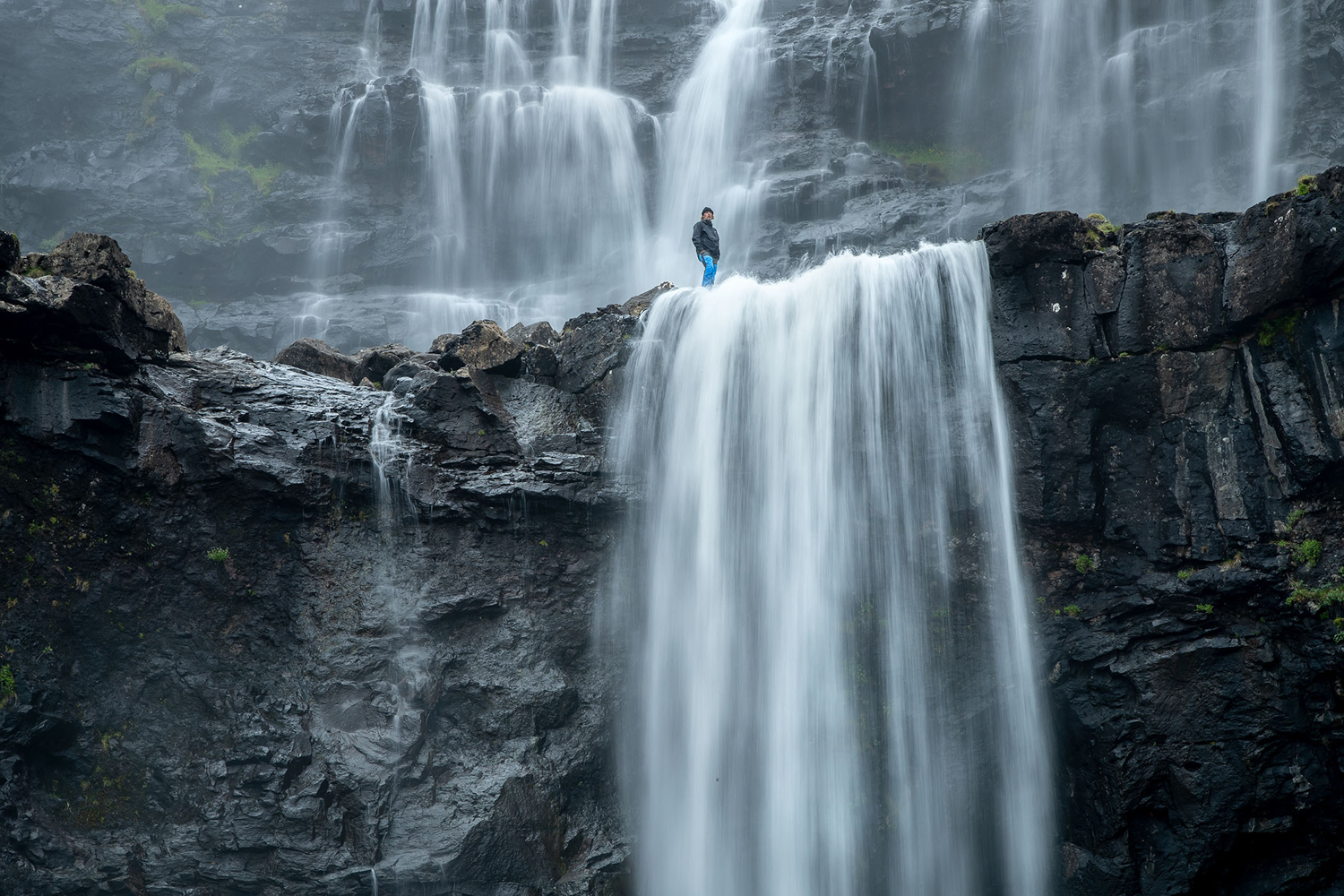
Throughout the week, the light was usually moody and atmospheric, accentuated by moments of brilliant sun and pockets of blue skies. The air there is impossibly fresh, cool, clean, and therapeutic. If you’re a waterfall junky, this place will give you a major hit of silky strands pouring down black basaltic rock with vivid greens on either side. Access to vantage points and subject material varies from easy roadside pullouts to a moderate, 4-mile round trip hike with 150 feet of elevation change. In all cases, waterproof footwear with excellent traction is as important as wind and waterproof shells and cozy layers, even in June.
The infrastructure on the Faroe Islands is typically Nordic in nature, characterized by exceptional internet and cell phone service, sleek facilities and smooth, entertaining roads that contour, sweep and dip around and under the mountains and fjords. In December 2020, work was completed on the Esturoy Tunnel, a 7-mile-long undersea tunnel with 3 branches and the world’s first undersea roundabout, adorned with colored LED lights and artwork. Needless to say, we made a few extra circles around it to take iPhone snaps of this extraordinary intersection!
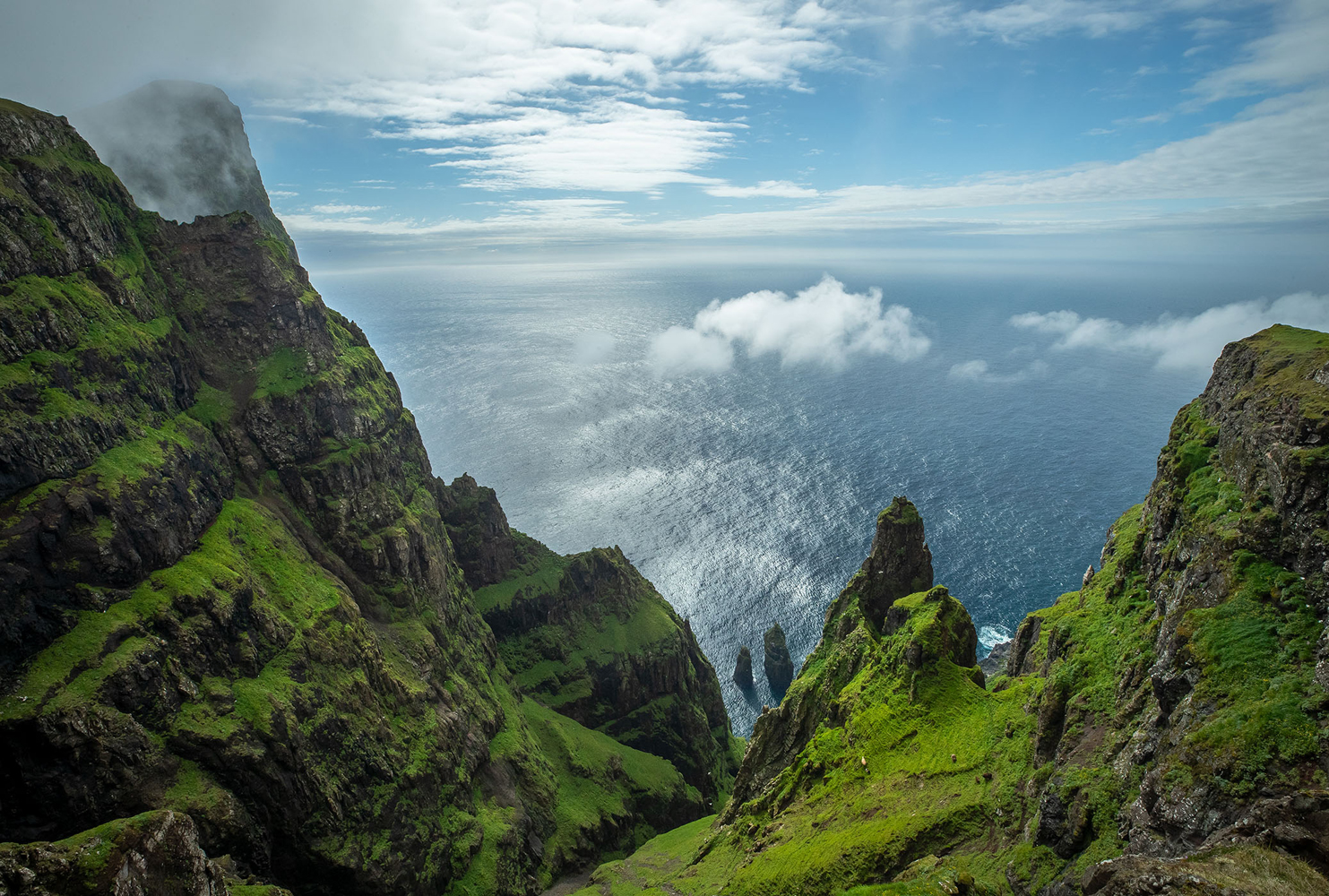
Although each day bestowed many visual gifts, my favorite was spent on the island of Suðuroy (South Island). To get there, we drove our vans aboard a large ferry ship in Thorshavn for a 2-hour ride. Although there are several iconic locations throughout the islands, it was here that we photographed the most dramatic and memorable. Among my favorites was a near vertical view, 400 meters down an emerald canyon to the ocean below at a place called Rivustakkur. The upslope wind, racing uninterrupted across the Atlantic, was so forceful that it acted like a harness preventing you from getting too close to the edge. A few meters behind, the air was so calm you could have built a house of cards. To the north, epic, wind-swept fog formations clung to the island’s southwest coast like a woolen blanket with holes poked by mountain peaks. Following that mind-blowing spot, we drove north to Kikarin á Eggini, to shoot the same coast looking the other direction. All afternoon, patches of sun and shadows of clouds raced across the landscape, rendering nearly every frame unique. What a treat.
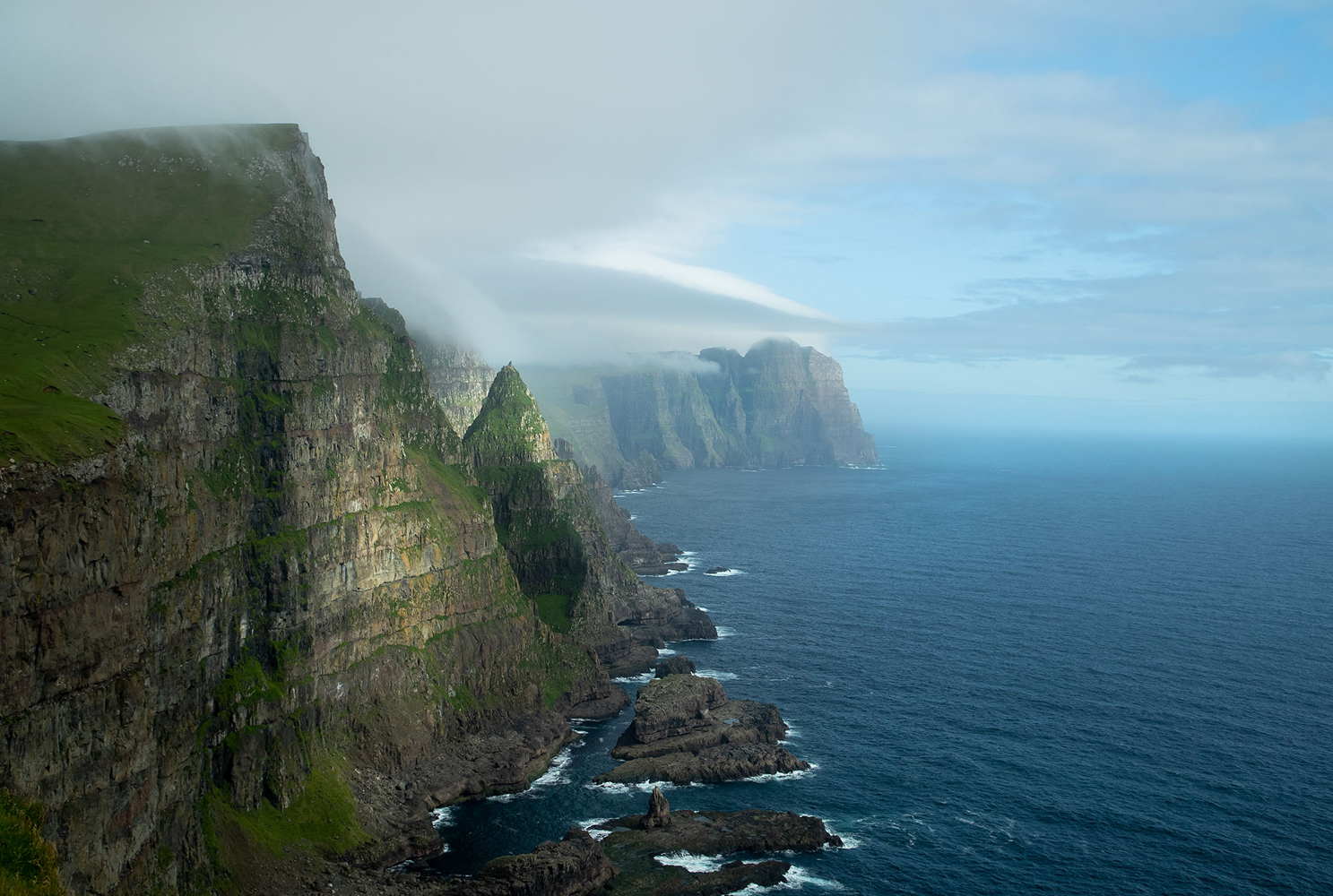
Although our dinner on the ferry going home was not so much a treat, most of the food in the Faroe Islands is high quality, even at gas stations where we would sometimes grab a quick panini and creamy latte. Although traditional Faroese food is notoriously adventurous, based on the generations old premise of using every available part of an animal, fish or sea creature, the more common menus feature European style bakery, breads, meats, cheeses, smoked salmon as far as the eye can see, amazing fish and seafood, and lots and lots of lamb. Sheep are literally everywhere on the Faroe Islands, including on nearly every menu. It was not uncommon to joke with any given sheep by the side of the road, trail, or your tripod that “I’ll see you at dinner”.
I know I haven’t talked about the photography that much here, but just look at the images. Each one is worth a thousand words that depicts a mystical place that draws you back the minute you leave. The tour was like a dream, but thankfully we all brought home stunning photos that prove it was in fact very real.
